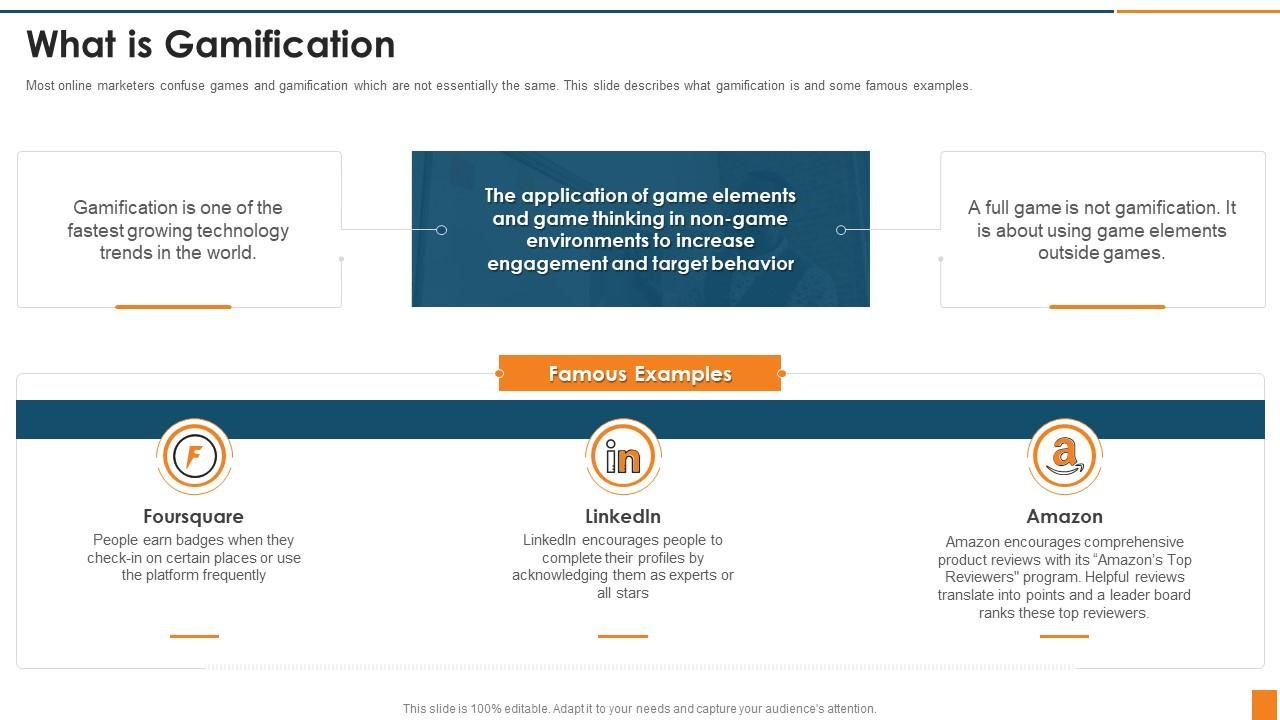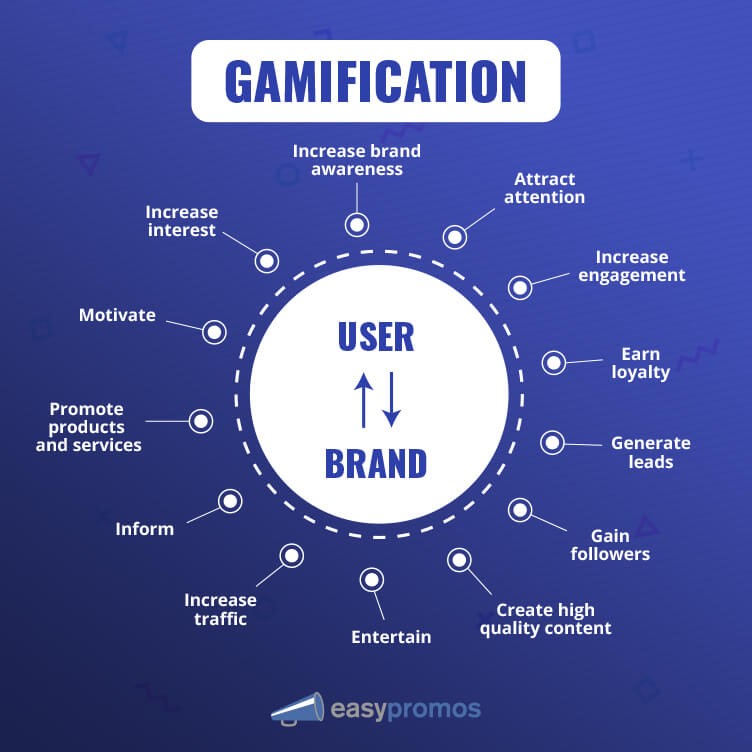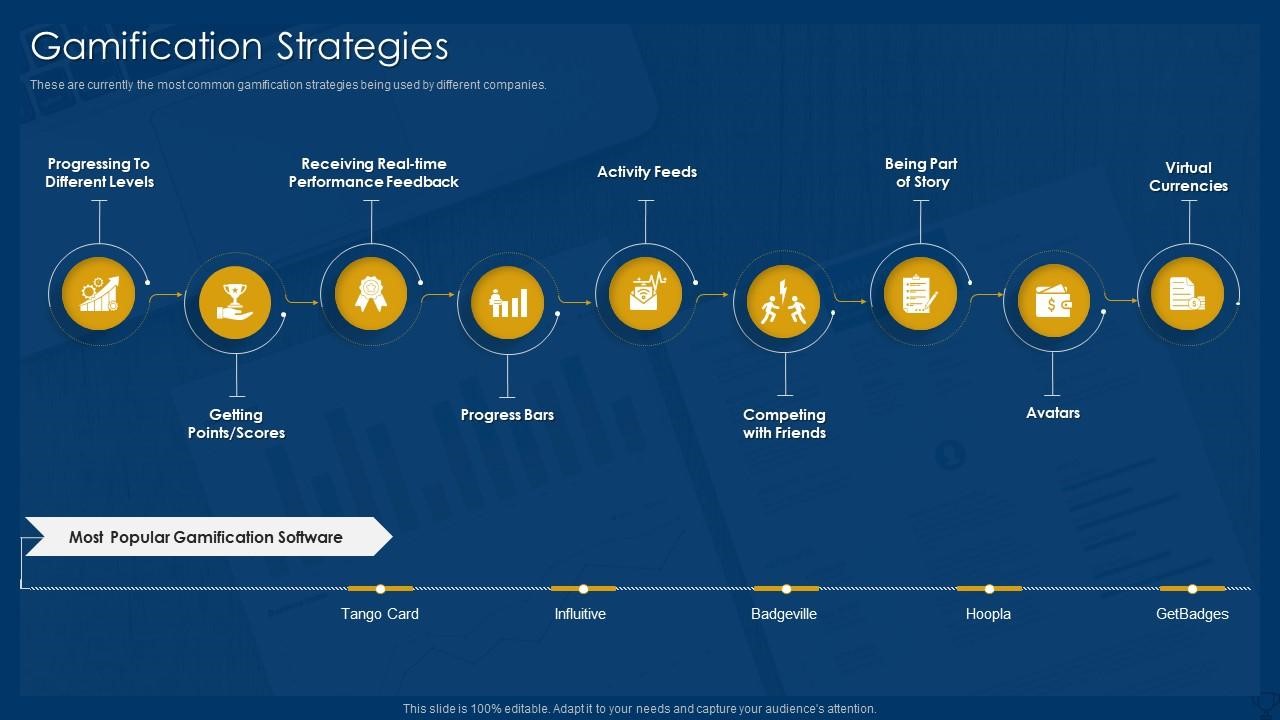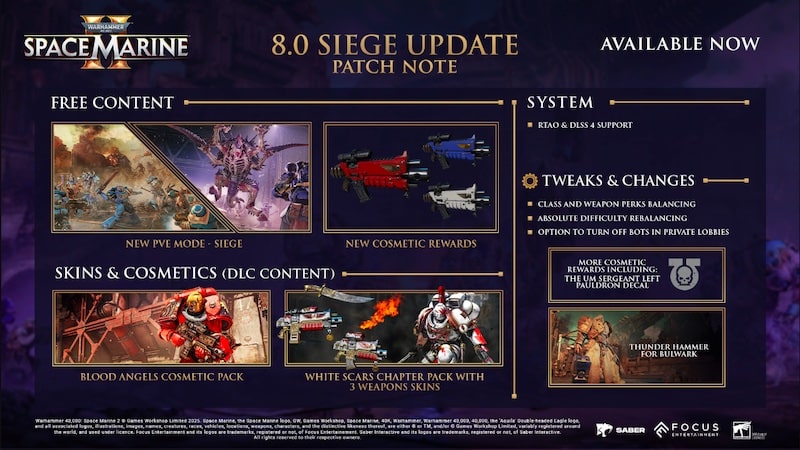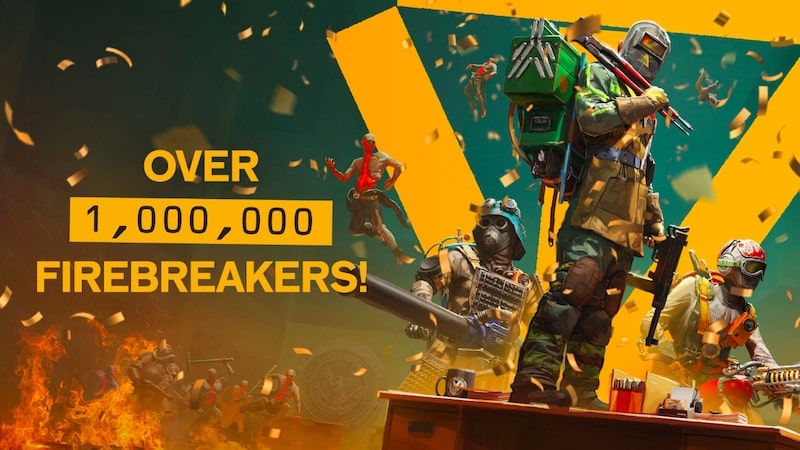Gamification in Marketing: Engaging Customers Through Playful Strategies
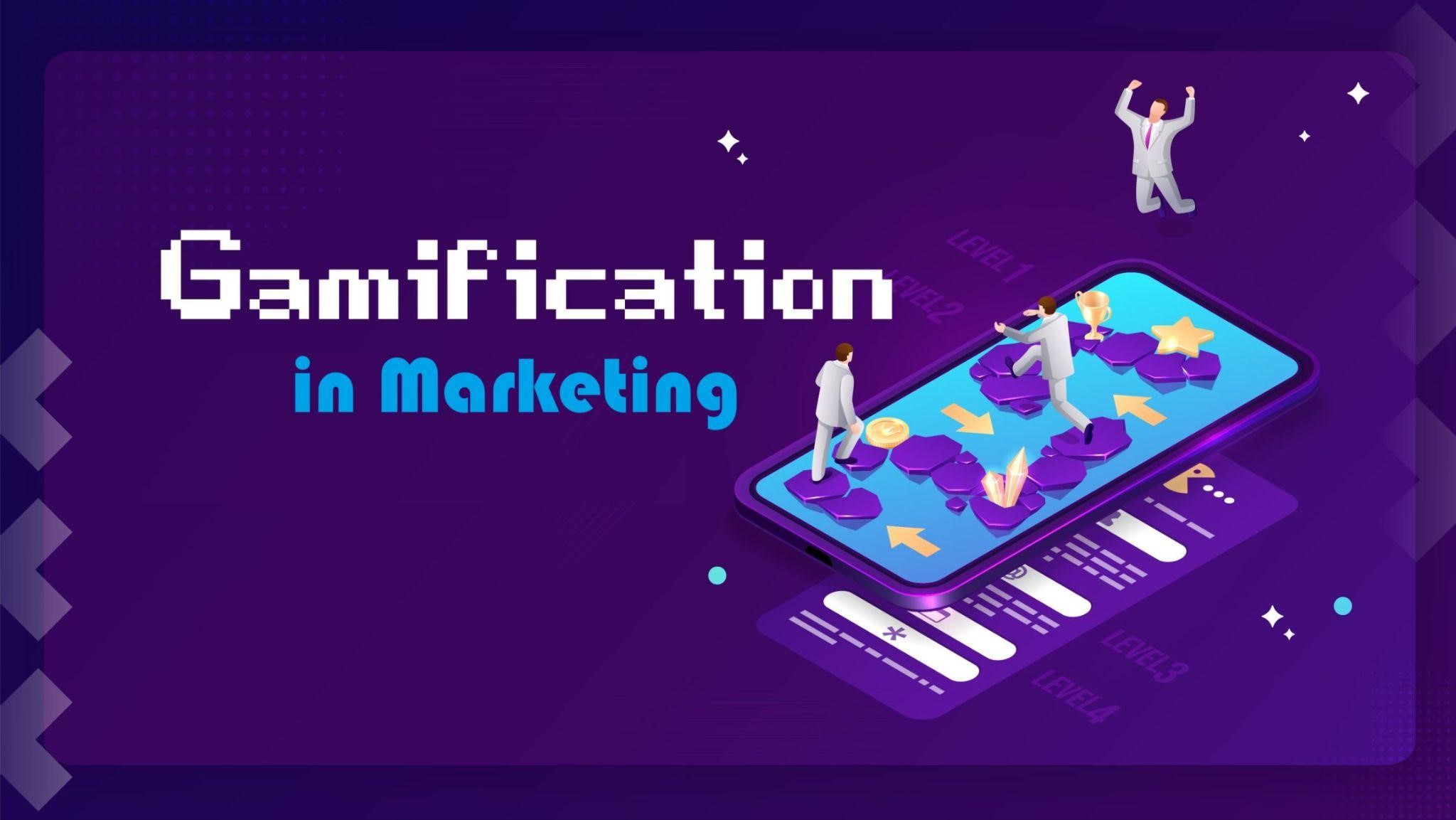
Have you ever wondered how companies make their products and services more interesting and fun? Well, they use something called “gamification” in their marketing. But what exactly is gamification? In simple words, it means adding game-like elements to non-game situations.
In this article, we’ll explore what gamification in marketing is all about and why it’s so important. We’ll also share different strategies and real-life examples that companies use to make their marketing more fun and effective.
What is Gamification?
Image source
Gamification is a clever strategy that makes regular stuff more interesting. It’s like adding fun game things to everyday activities, like school or work, to get people excited and motivated. You know, things like points, badges, challenges, and rewards.
How does it work?
Gamification understands how our brains work. We humans love a bit of competition and feeling like we’ve achieved something. So, gamification uses things like leaderboards and badges to make us want to join in and reach some goals.
Sumeer Kaur, Founder of Lashkaraa.com stated, “Gamification harnesses our innate desire for achievement and recognition, transforming routine tasks into exciting journeys of progress.”
For example, in school, it can give you a badge for finishing your homework or trying to beat your friends’ quiz scores. At work, it can turn boring tasks into fun challenges with prizes.
Key Elements of Gamification
There are various key elements that together make gamification a powerful tool for engagement and motivation. These elements include:
1. Game Mechanics
Game mechanics are the rules that ensure gamification runs smoothly. Think of them as the building blocks that create a fun experience. These mechanics include things like points, levels, and challenges. When you do tasks, you earn points, and if you collect lots of points, you might level up. Challenges add that extra layer of excitement by requiring effort to earn rewards — making the whole experience more engaging and enjoyable. Chase Hughes, Founder of ProAI says, “The essence of gamification is not in the reward, but in the journey crafted by its mechanics.”
2. Rewards and Incentives
Rewards and incentives are the motivation boosters in gamification. They’re the enticing treats that make you want to participate and succeed. These can come in various forms, such as virtual badges, discounts, or even real prizes. When you accomplish tasks or reach goals, you get these rewards. Josh Topolski, CEO of TRIIO, remarks, “Rewards are the milestones, marking each step of our engagement and pushing us forward.”
3. Competition and Cooperation
Competition and cooperation are two sides of the gamification coin. Competition is when you try to do better than others, like racing against friends to see who gets the most points. Cooperation is when you work together with others to achieve a common goal, like teaming up to solve a puzzle. Both competition and cooperation add spice to the gamified experience — making it more fun and engaging for everyone involved. According to renowned behavioral scientist Eran Mizrahi, CEO of Ingredient Brothers, “In gamification, competition ignites the spark, while cooperation fans the flames.”
4. Progression and Achievement
Progression and achievement are like climbing a ladder in gamification. Progression is about moving forward, step by step, like going from one level to the next. Achievement is that feeling of “I did it!” when you reach a goal or complete a challenge. Together, they make the gamified experience feel like an adventure where you’re always growing and accomplishing things. Sarah Jeffries, Qualified Mental Health First Aid Trainer at First Aid Courses Manchester puts it simply, “Progression keeps you going, and achievement gives you those little wins we all love.”
Psychology Behind Gamification
Gamification taps into our psychology to make activities more engaging. Here’s how:
- Motivation and Engagement: Gamification aims to keep you interested and motivated. You get rewards, points, and challenges to make tasks enjoyable. Imagine how a good book keeps you hooked — gamification does something similar but with points and rewards. As Brandon Armstrong, CEO of Quinable Inc notes, “Gamification isn’t just about points and badges; it’s about creating a cycle of motivation, action, and reward that keeps users coming back.”
- Behavioral Psychology: This branch delves into our actions and reactions, especially when there’s an element of fun. In gamification, behavioral psychology plays a pivotal role, turning routine tasks into vibrant endeavors. You’re not just finishing tasks; you’re unlocking achievements. Micajah McGregor, Chief Editor at FanFest remarked, “Gamification is like sprinkling a bit of fairy dust on everyday tasks, turning chores into quests.”
- Cognitive Psychology: Understanding how the mind works is key in gamification, especially when designing challenges and puzzles. By catering to our cognitive processes, gamification ensures that tasks are both engaging and mentally enriching. Stephanos Oikonomou, Director at GoVisaFree advises, “In gamification, always challenge the mind, but also reward its efforts. It’s this balance that fosters growth and engagement.”
Now, let’s move on to the next section where we’ll talk about the benefits of gamification in marketing.
Benefits of Gamification in Marketing
Image source
Gamification brings a lot of benefits in marketing. Here are some potential benefits that you can enjoy:
● Improved Customer Engagement
Imagine transforming your standard marketing approach into an engaging board game or an intriguing puzzle. That’s what gamification does. By adding a sprinkle of fun and interactivity, gamification boosts customer engagement levels. The result? You don’t just have visitors or customers — you have participants. They spend more time on your website, share content, and become your brand’s advocates. As Martin Seeley, CEO of Mattress Next Day remarked, “In the digital age, engagement is the currency. And gamification is the mint where it’s produced.”
● Increased Brand Loyalty
Just as friendships strengthen over shared experiences, gamification fosters a bond between your brand and its audience. Every point earned, challenge conquered, and badge unlocked, intensifies the connection. It’s not just about transactions; it’s about memorable interactions. Sam McKay, CEO of Enterprise DNA emphasizes, “Gamification is the bridge from mere brand recognition to deep brand loyalty. Cross it with your customers, and they’ll keep coming back.”
● Enhanced Customer Data Collection
Nobody likes intrusive surveys or tedious forms. But what if data collection felt like part of the game? With gamification, you’re not just asking for data; you’re offering an engaging experience in exchange. This leads to more genuine insights, as users willingly share information in a fun environment. Claire Jill Parker, Director of Business Management at GoVisaFree states, “When data collection feels like play, it results in richer, more authentic insights.”
● Competitive Advantage
In the vast sea of business competition, gamification is your lighthouse. It showcases your brand’s commitment to innovation and unique customer experiences. While competitors might offer similar products or services, your gamified approach can be the differentiating factor that lures and retains customers. Tom Andrew, Marketing Director at Next Day Podcast suggests, “Gamification isn’t just a tactic; it’s a statement. It says we value and understand the evolving needs of our customers.”
● Positive Impact on Sales
Converting sales becomes less about aggressive marketing and more about interactive play with gamification. With elements like limited-time rewards, competitive challenges, and enticing offers, customers get drawn into a purchasing mindset without even realizing it. And as they get engrossed in the game, they are more likely to add to their cart and checkout. Johnny Dixon, Marketing Director at Accountant Edinburgh believes, “Incorporating gamification is like setting up a treasure hunt where the purchase is the prize. And who doesn’t love hunting for treasures?”
Let’s move on to the next important part — gamification strategies in marketing.
Effective Gamification Strategies in Marketing to Try Today
Image source
Follow these simple tips and strategies to get the most out of your gamification efforts:
1. Gamified Loyalty Programs
“Gamified loyalty programs are a smart way to keep customers coming back for more. First, you can use a points system where customers earn points for every purchase or action, like leaving a review. These points can then be turned into rewards, like discounts or free products.”, says Ashley Newman, Content Director at Accountant Glasgow.
Another effective strategy is creating tiered systems. Customers start at one level and can climb higher by engaging more with your brand. Higher tiers come with better rewards and perks, making customers strive to reach the top.
By implementing these strategies, you’re not only increasing customer loyalty but also creating a sense of achievement and excitement in your marketing approach. It’s a win-win for both you and your customers.
2. Interactive Contests and Challenges
Interactive contests and challenges are fantastic ways to get your audience involved and excited. Tessa Benson, Founder of Thoughtful Gift Lab points out, “One strategy is running social media contests. Encourage users to participate by submitting photos, videos, or ideas related to your brand or products.”
Give them a chance to win prizes or recognition for their efforts.
User-generated content contests are another smart move. Ask customers to create content around your brand and reward the best entries. This not only engages them but also generates authentic content you can use in your marketing.
These strategies leverage the power of interactive contests and challenges to create a more engaging and exciting marketing experience for your audience.
3. Gamified Product Design
Gamified product design is all about making your products more engaging and enjoyable for your customers.
Gerrid Smith, CMO of Joy Organics, shared, “An effective strategy is incorporating elements of play into the physical design or packaging of your products.”
For example, you can add puzzles, hidden surprises, or interactive elements that encourage customers to explore and engage with the product beyond its primary function.
In addition, consider incorporating digital gamification elements into your product, especially if it has a digital interface or app. Some useful features like progress bars, achievements, or challenges can motivate users to interact with your product regularly and provide valuable feedback or data. This not only enhances the user experience but also fosters brand loyalty and keeps customers coming back for more.
4. Gamification of Marketing Content
Gamification can breathe new life into your marketing content — making it more interactive and engaging.
Gerrid Smith, CMO of Joy Organics, shares, “A powerful strategy is the use of gamified videos. These videos incorporate interactive elements like quizzes, polls, or decision-making scenarios, allowing viewers to actively participate in the content.”
Another effective approach is creating interactive blog posts. You can include elements like clickable infographics, quizzes, or challenges within your blog content. These encourage readers to explore the content in a more hands-on way — keeping them engaged and interested.
Furthermore, consider employing gamified storytelling techniques. Craft narratives that involve the audience — letting them make choices that impact the story’s outcome. This interactive storytelling approach not only makes your content more enjoyable but also encourages sharing and discussion.
5. Gamified Influencer Marketing
Gamified influencer marketing is a creative way to harness the power of influencers while making the process more engaging. Michael Larsen, CMO of Dugnadseksperten, says, “One strategy is to create influencer challenges. Invite influencers to participate in unique challenges related to your product or brand. Encourage them to compete or collaborate to achieve specific goals.”
This not only piques their interest but also generates authentic content and buzz around your brand.
Collaborative campaigns with influencers are another effective approach. Partner with influencers to create content that’s more like a joint adventure than a typical endorsement.
This collaborative storytelling can be gamified by involving the audience — letting them contribute to the narrative or participate in challenges alongside the influencers. Visit here to discover the most efficient methods for boosting your Instagram followers swiftly and organically.
In the same vein as innovative gamification strategies, many businesses are embracing modern technological solutions to elevate their operations and customer experience. Whether you’re into a manufacturing business like CNC machining service, in consumer business, or in SaaS – gamification can really elevate your marketing.
How to Implement Gamification in Marketing?
Implementing gamification in marketing requires a thoughtful and strategic approach. Here’s how you can do it:
1. Identify Target Audience:
Understanding your target audience is the first crucial step. As Julia Dunlea, VP of Marketing at Akkio, says, “You need to know who your potential players are and what motivates them. Conduct market research and gather data to create detailed customer personas.”
These personas will guide your gamification strategy, helping you tailor it to the preferences and behaviors of your audience.
For example, if your target audience is young professionals, you might focus on competition and rewards as these elements often resonate with this demographic. On the other hand, if your audience includes parents, you might consider family-oriented challenges and incentives.
2. Set Clear Objectives and KPIs:
Before launching any gamification campaign, define your objectives and Key Performance Indicators (KPIs). What do you want to achieve with gamification? Is it increased brand engagement, higher conversion rates, or better customer retention? Set specific, measurable, achievable, relevant, and time-bound goals.
3. Choose the Right Gamification Mechanisms:
Selecting the appropriate gamification mechanics is essential. Each element, whether it’s points, badges, leaderboards, or challenges, should align with your objectives and resonate with your audience. Michael Hess, Tech Expert at Code Signing Store, shares a tip: “Consider the psychology behind gamification to motivate and engage users effectively.”
4. Integration with Existing Marketing Strategies:
Gamification shouldn’t be a standalone strategy. It should seamlessly integrate with your existing marketing efforts. Ensure that the gamified elements complement your brand’s messaging and overall marketing strategy.
For example, if you have an email marketing campaign, you can incorporate gamified elements like clickable challenges or rewards for subscribers who engage with your emails. This integration ensures a consistent brand experience.
5. Leverage Technology and Tools:
Tiffany Parra, Owner of FirePitSurplus.com, adds Leverage technology and gamification platforms to implement and manage your campaigns efficiently. Utilize tools that allow you to create and track gamified content, collect user data, and measure performance against your established KPIs.
Gamification software can help automate tasks, such as awarding points or tracking progress, saving you time and ensuring a smooth user experience. And visit here to discover apps that can enhance your gameplay.
6. Testing and Optimization
Even the most well-planned gamification strategies require testing and continuous optimization. As David Martinez, VP Enterprise & OEM Accounts at Cybernet Manufacturing, “A/B testing can help you fine-tune your gamified elements to determine what resonates most with your audience. Analyze data regularly to identify areas for improvement.
For example, if you notice that users are dropping out of a game before completion, you might need to adjust the difficulty level or the rewards offered.
Conclusion:
Gamification in marketing is like turning everyday activities into enjoyable games that capture your audience’s attention. By incorporating game-like elements, such as points, challenges, and rewards, you can motivate and engage customers in exciting ways. It’s all about understanding your target audience, setting clear objectives, and choosing the right gamification mechanics. With the help of technology and tools, you can seamlessly integrate gamified experiences into your marketing strategies.

